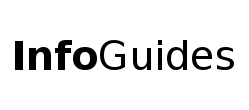Review the Omeka Classic planning tips prior to starting your project.
Useful tips
- Omeka does not automatically save anything, so always have a backup copy of your work. This means you should write out all text in a Word document, Google doc, etc. before you begin working in Omeka. You should have a document that includes each item you will add and its accompanying metadata together with all of the text and footnotes you will include in your exhibit.
- Items = primary and secondary sources. Think of items as the primary and secondary sources you would utilize in a research paper. Add primary and secondary sources as items to use them as evidence in your exhibit.
- Just as you need to read through all of your primary and secondary sources prior to writing a research paper, you should add all of your items to Omeka prior to creating your exhibit.
- Consider creating a paper prototype of your exhibit prior to creating your exhibit in Omeka. This will help you to think about the structure of your exhibit as well as the design for each page. What items (your primary and secondary sources) should be on what page(s)? Where on the page(s) should those items be displayed?
There are two ways to think about creating a digital exhibit.
- A digital exhibit is a research paper, but one that is online, openly accessible, and written in language that is engaging to an audience that is comprised of more than academics.
- Think about your digital exhibit the same way you do a research paper. The first page you create in Omeka is similar to the introductory paragraphs of a research paper and should include an introduction to your topic, your research questions, historiography, sources used, and your arguments. Each subpage you create in Omeka is similar to the body paragraphs of a research paper and should include relevant themes and topics or should be chronological in nature. The final subpage will be a bibliography.
- A digital exhibit is a digital version of an in-person exhibit you would see at a cultural heritage institution.
- The other way you can think about your digital exhibit is that it is an in-person exhibit in an online format. When you visit an exhibit at a history museum, art gallery, or other cultural heritage institution, typically the first thing you see is a wall of text that includes what the exhibit is about, the scope and content of the exhibit, and the arguments the exhibit is making. This would be similar to the first page you create in Omeka. Each different part of the exhibit has its own distinct theme with its own distinct content. This would be similar to each subpage you create in Omeka.
What is metadata?
At its most basic, metadata is information about information. But what exactly does that mean? Consider all of the different components you need to create a proper Chicago style citation. For a book you include the author, title, place of publication, publisher, and year of publication. For an article, you include the author, article title, journal title, volume, number, year, and page numbers. Each of those components is a piece of metadata. Metadata provides information about the sources you used. The more detailed and robust metadata you can create, the better. Metadata is important because it enables other scholars to locate your sources themselves.
Consider these two examples of metadata. This record of the Abbeville Progress newspaper lists the publication-level metadata available, including title, place of publication, geographic coverage, publisher, dates of publication, description, frequency of publication, language, subjects, notes, and preceding and succeeding titles. This record of the Loudoun News newspaper lists the publication-level metadata available, including title, dates available online, and place of publication. The metadata for the Abbeville Progress is incredibly comprehensive and a researcher can learn and surmise a lot of information on the publication, its political leaning (whether it will contain liberal or conservative viewpoints, or both, depending on the writers and editors of the paper), potential audience, time period, and more.
Web hosting and installing the software
You will need to purchase web hosting to install and use Omeka but the software itself is free and open source. We recommend using Reclaim Hosting. They have excellent customer service and provide a variety of plans. They can also make a recommendation depending on your needs.
See Reclaim Hosting's documentation on installing Omeka Classic for more information.
Omeka.net is a hosted service run by the Omeka team. They provide a variety of plans and manage the web hosting and software upgrades.

